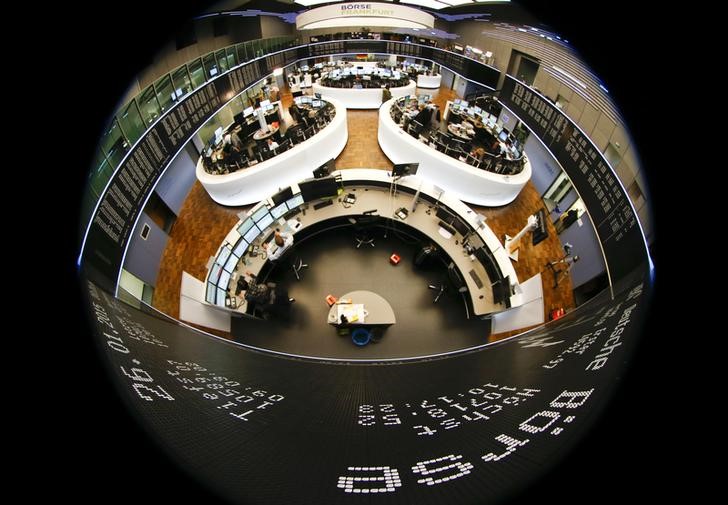* Euro hits 23-month high vs dollar, dips after German PMI
* Oil dips again as producers meet in St Petersburg
* Weak dollar, political ructions, push gold to 4-week high
* Graphic: World FX rates in 2017 http://tmsnrt.rs/2egbfVh
By Nigel Stephenson
LONDON, July 24 (Reuters) - The euro hit a 23-month high on Monday against an ailing dollar, weighing on shares of European exporters before weaker-than-expected German business activity took the shine off the single currency.
The euro touched $1.1684 in Asian trade before pulling back to trade at $1.1648, down 0.2 percent on the day EUR= . It hit a low for the day of $1.1638 after preliminary data showing German private sector growth slowed more than expected in July. euro's strength helped push the dollar - hamstrung by political uncertainty in Washington - to its lowest in 13 months against a basket of major currencies .DXY .
The euro has risen in recent weeks on expectations the European Central Bank will before long begin to scale back its bond-buying monetary stimulus scheme.
On Friday, the day after an ECB policy meeting, four sources with direct knowledge of the discussions said policymakers saw October as the most likely date to decide whether to claw back stimulus.
European shares fell on Monday. The exporter-dominated German DAX index .GDAXI dropped 0.2 percent. The pan-European STOXX 600 index .STOXX was down 0.1 percent, after falling 1 percent on Friday as the strong euro weighed on earnings.
German government bond yields edged lower after euro zone business activity data also came in below forecasts.
The 10-year yield DE10YT=TWEB - the benchmark for euro zone borrowing costs - fell to 0.49 percent, down 0.4 basis points and its lowest in more than a week. Yields fell on Friday as the strong euro led investors to question the timing of when the ECB would begin to withdraw its stimulus.
'PATH OF LEAST RESISTANCE'
The dollar index was up 0.1 percent from the earlier low. Investigations into alleged Russian meddling in last year's U.S. presidential election are seen as potential roadblocks to President Donald Trump being able to implement his economic agenda.
"A weaker dollar seems to be the path of least resistance given the soft data coming out of the U.S. and the political uncertainty," said Michael Hewson, chief markets strategist at CMC Capital Markets in London.
Speculative investors turned negative on the dollar last week for the first time in more than a year, data from the Commodity Futures Trading Commission showed on Friday IMM/FX .
Earlier, MSCI's broadest index of Asia-Pacific shares outside Japan .MIAPJ0000PUS reversed earlier losses to edge up 0.3 percent.
But Japan's Nikkei .N225 dropped 0.6 percent, pressured by a stronger yen. Australian shares .AXJO retreated 0.7 percent and South Korea's KOSPI .KS11 edged down 0.1 percent.
Chinese bluechips .CSI300 closed up 0.4 percent and close to 18-month highs as institutional investors stepped up purchases of big companies' shares.
Oil prices dipped, adding to Friday's 2.5 percent fall, before a meeting of OPEC nations and other producers. Brent crude, the international benchmark, was down 12 cents at $47.94 a barrel.
Ministers from the Organization of the Petroleum Exporting Countries and other non-OPEC producers will meet in St Petersburg to review market conditions and examine any proposals related to their pact to cut output.
Sources familiar with the talks said the meeting may recommend a conditional cap on production from Nigeria and Libya - two OPEC members so far exempt from output cuts - although some analysts were sceptical the group would make such a move.
The relatively weak dollar helped push copper close to its highest since March. The metal last traded 0.1 percent lower on the day at $6,003 a tonne.
Gold XAU= hit its highest in four weeks and last stood at $1,254 an ounce, down 0.1 percent on the day.
For Reuters Live Markets blog on European and UK stock markets see reuters://realtime/verb=Open/url=http://emea1.apps.cp.extranet.thomsonreuters.biz/cms/?pageId=livemarkets
